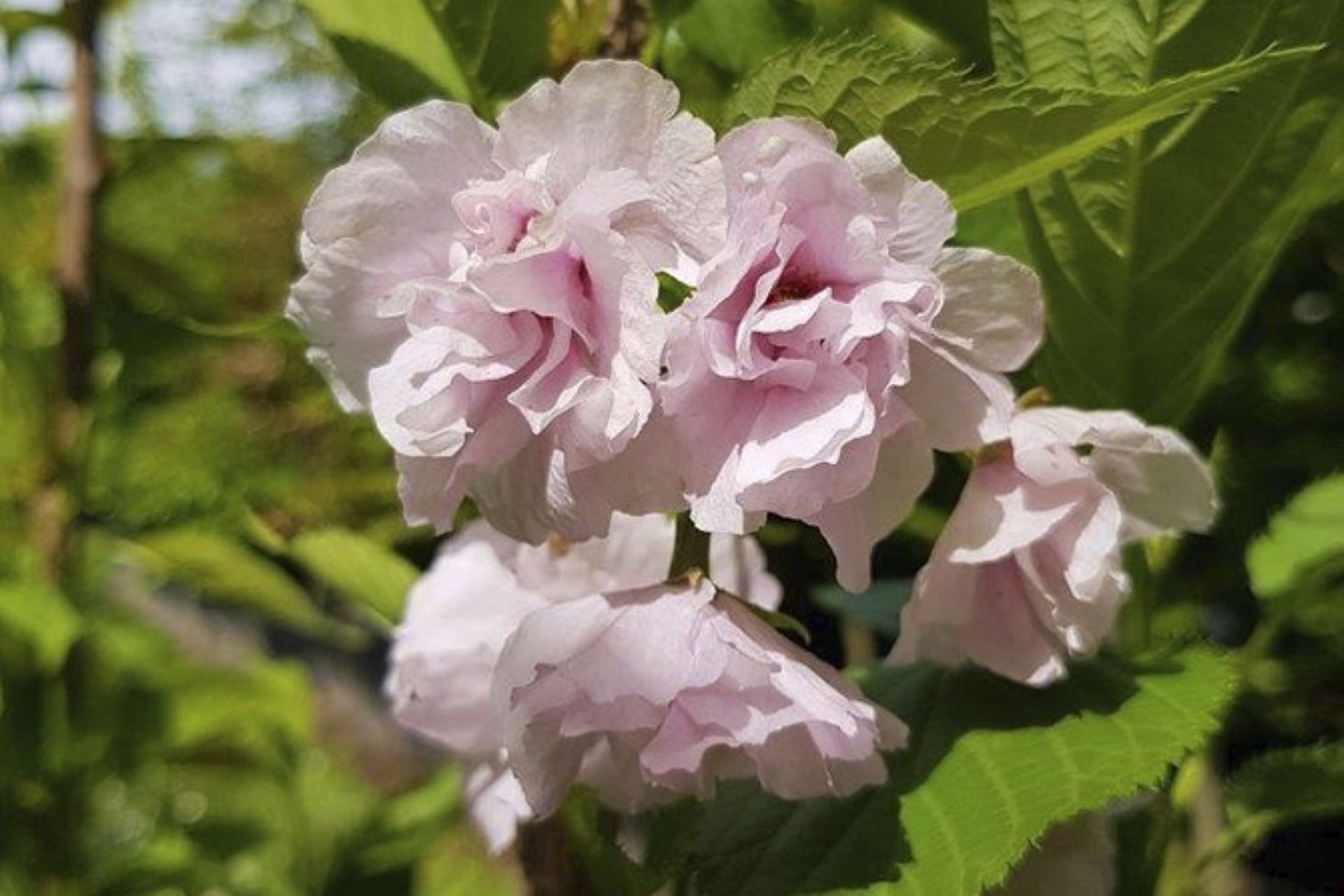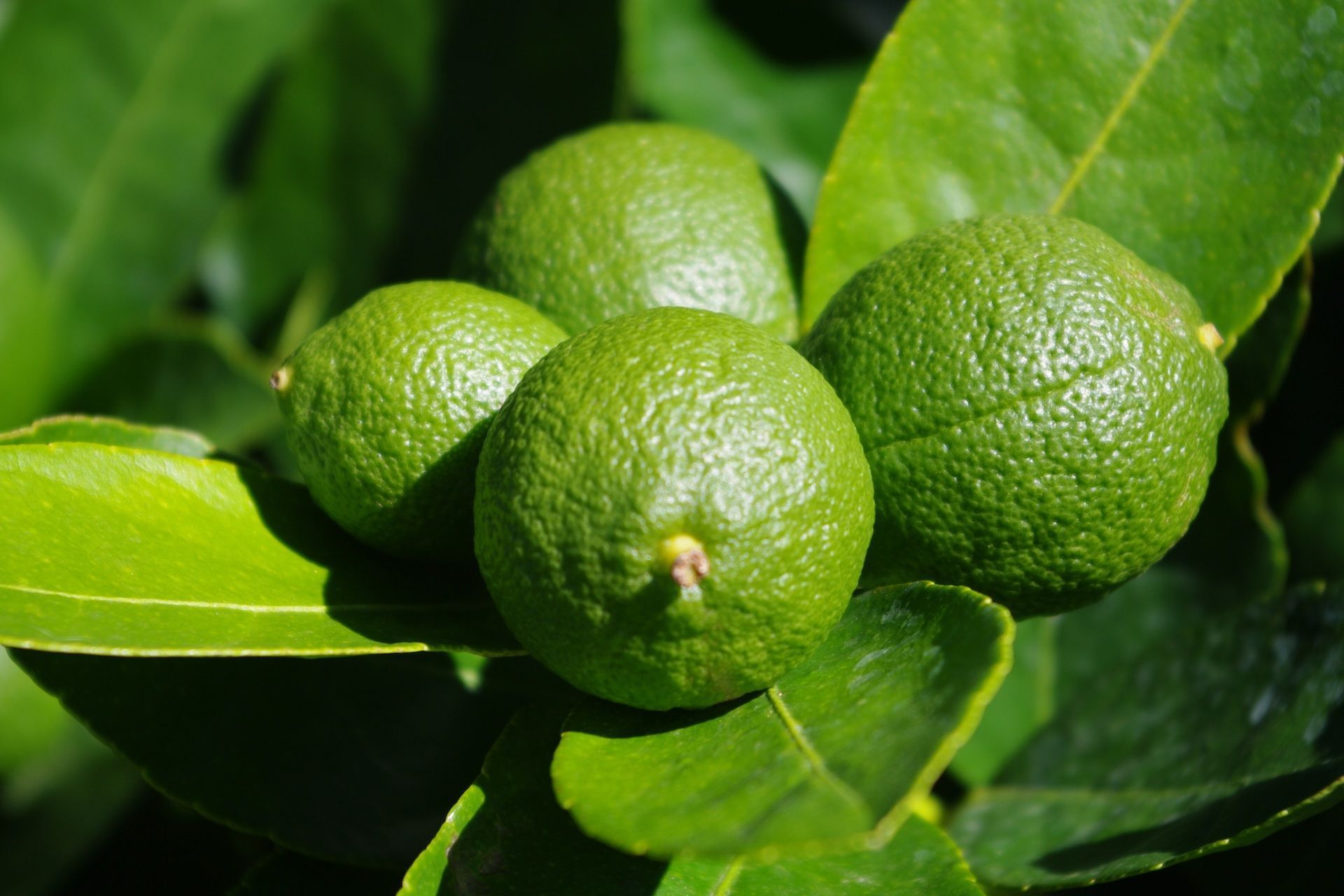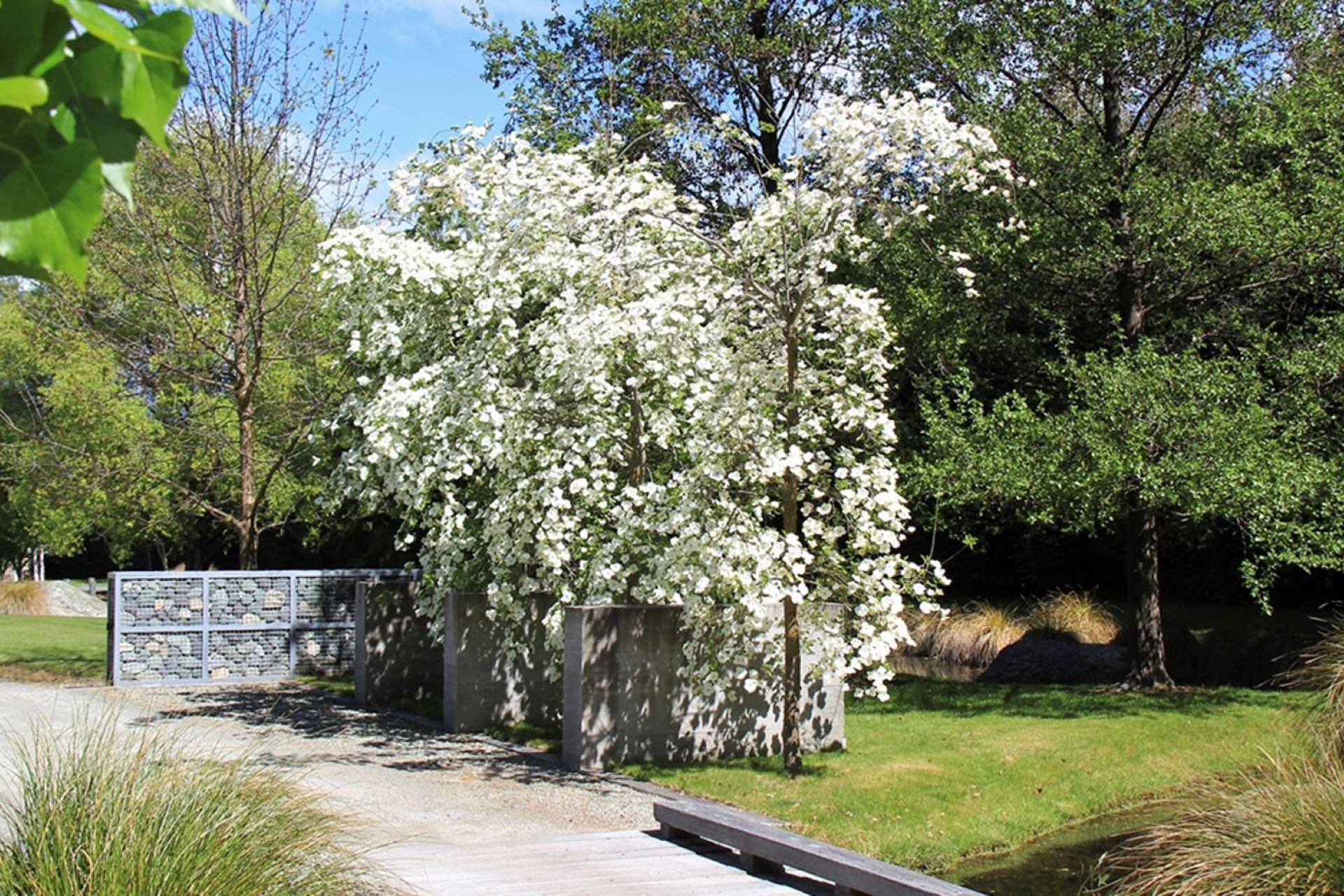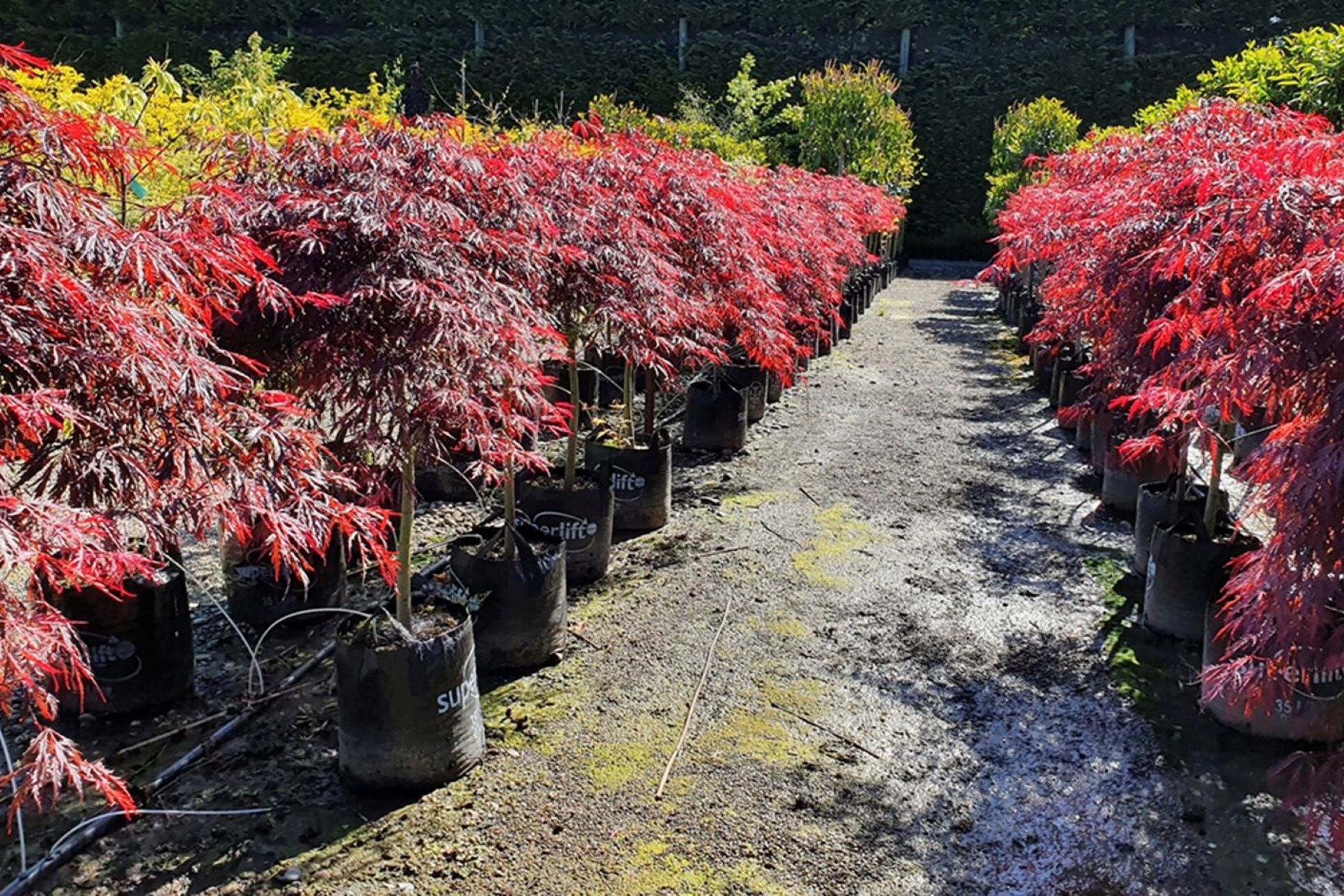11 terrific trees for small gardens in New Zealand
Written by
25 February 2024
•
13 min read
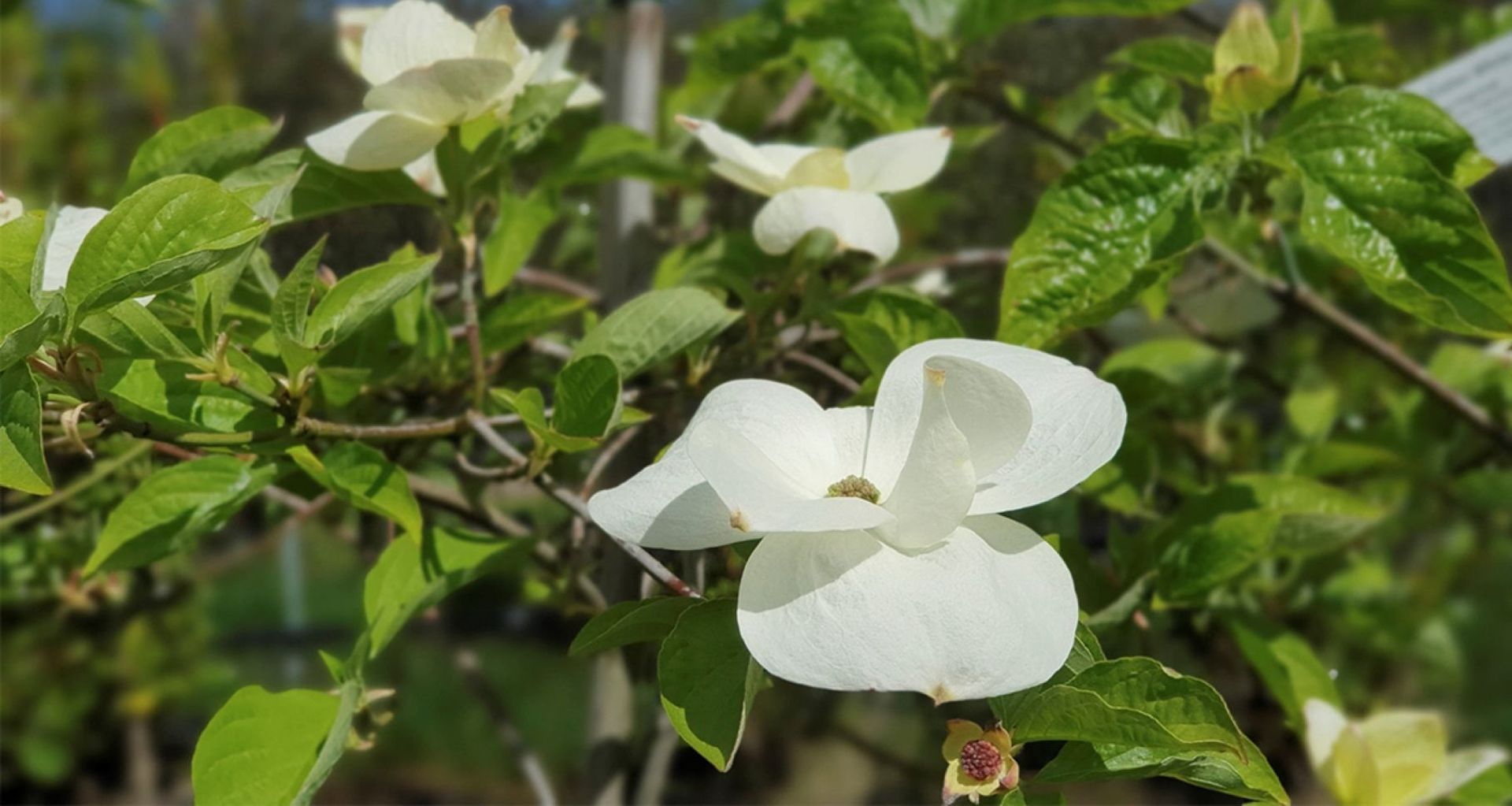
The increase in housing intensification in recent years has led to the shrinking size of gardens, especially in our urban areas. As a result, the demand for small garden trees has grown with homeowners looking for options that will look great but not become unmanageable in the future. If you're one of the many who have a small garden to nurture then we've got some great recommendations that will flourish in your space and thrive in New Zealand conditions.
1. Buxus (Boxwood)
Buxus hedges, or boxwood, are a popular choice for small gardens due to their dense, evergreen foliage and versatility in forming structured designs. One of the key characteristics of Buxus is its tolerance for heavy pruning, which means they are commonly kept much smaller in garden settings, often shaped into formal hedges or topiary forms that can be as low as 30 cm in height.
They can be used for creating borders, edging, and formal garden layouts even in limited spaces. Their slow growth rate means they require less frequent pruning than many other hedge plants, which is great for gardeners looking for low-maintenance options. Additionally, Buxus species are well-suited to New Zealand's climate, being hardy and able to thrive in a range of conditions from sunny to shaded areas.
Recommended varieties of Buxus
Buxus hybrid 'Green Gem' is a great choice reaching only about 60 cm in height and spread, making it ideal for tight spaces and low hedges.
Buxus sempervirens 'Suffruticosa', known as English Box or Dwarf Box, grows up to 1 metre tall and is easy to maintain and a year-round contributor to the look of a garden.
Related article: 9 of the best hedge plants for gardens in New Zealand
2. Camellia
Camellias are an exceptional choice for small gardens in New Zealand with a wide variety of species and cultivars ranging from small shrubs to medium-sized trees. The plants are celebrated for their stunning, rose-like flowers available in a myriad of colours (white, pink, red, and variegated patterns) which bloom from late fall to early spring. Camellias also provide year-round interest with their glossy, evergreen leaves, contributing structure and greenery throughout the seasons.
Beyond their beauty, Camellias are low-maintenance and resilient, requiring minimal care once established. They are adaptable to various landscaping designs, whether as specimen plants, in borders, or containers. Importantly, Camellias support local ecosystems by attracting pollinators and purifying the air.
Recommended species of Camellia
Camellia sasanqua can vary in size but typically grow to about 2 to 4 metres in height. They are known for their tolerance to the sun and have a relatively fast growth rate.
Camellia japonica is known for its large, beautiful flowers and can grow to be quite substantial, reaching 1.5 to 6 metres in height, depending on the variety and conditions.
Camellia setsugekka features beautiful white flowers with a sublte fragrance and grows to around 2.5 metres in height.
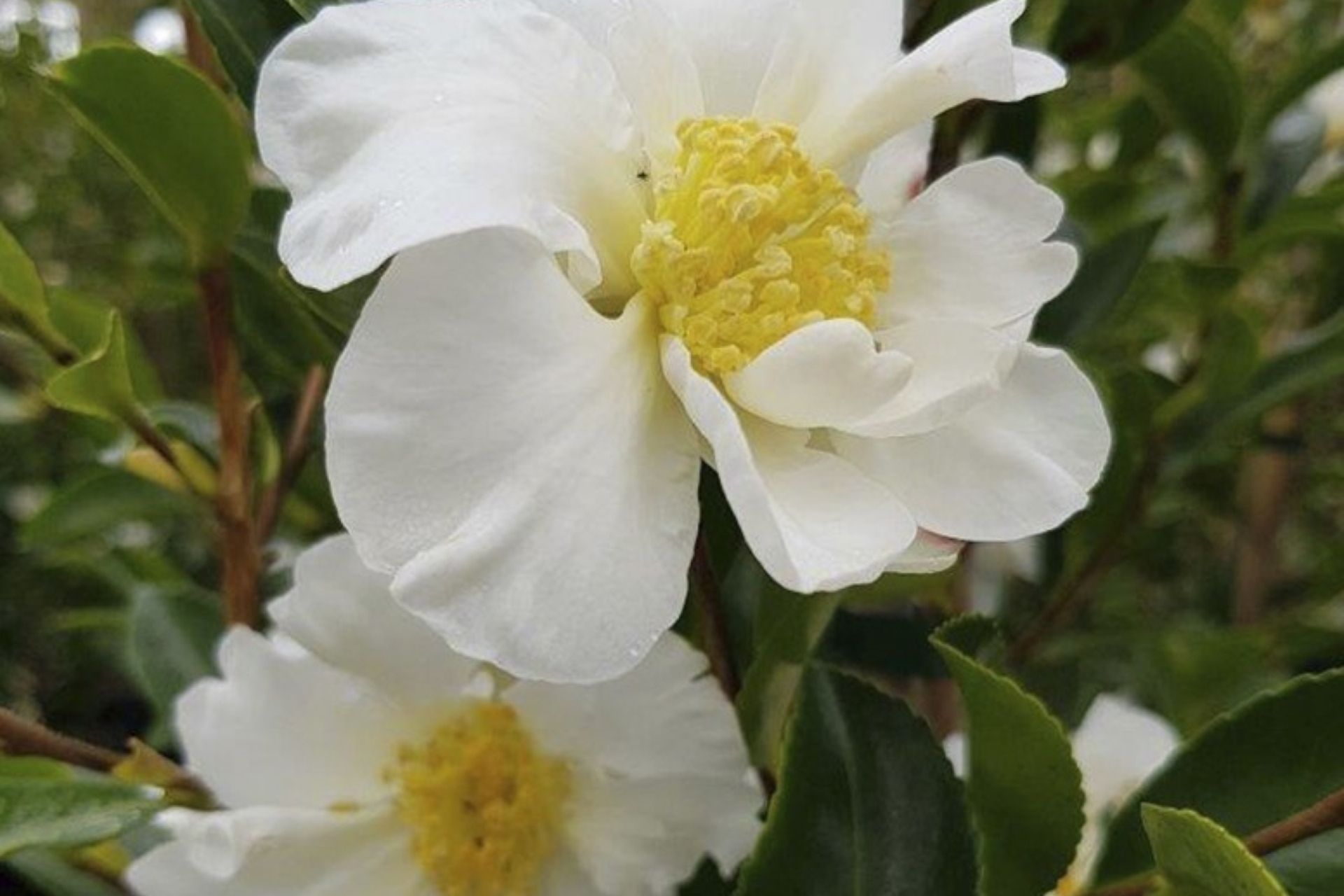
3. Cercis (Redbud)
Cercis trees, known for their modest size and striking ornamental value, feature species and cultivars like 'Forest Pansy' and 'Avondale' that mature to a manageable height of 3 to 5 metres. These trees kick off the spring with a remarkable display of pink or purple flowers directly on their branches, followed by unique heart-shaped leaves that vary in colour from green to purple, depending on the variety. This seasonal transformation provides a continuous visual appeal, from the vibrant spring blooms to the richly coloured autumn foliage.
Adaptable to a variety of soil types and conditions, Cercis trees require minimal maintenance once established, thriving in both full sun and partial shade. Their ease of care, coupled with their year-round beauty—from the early spring floral spectacle to the stunning leaf colour changes—makes them a practical and visually appealing option for enhancing small garden spaces in New Zealand.
Recommended species of Cercis
Cercis canadensis 'Forest Pansy' Redbud grows 3 to 5 metres tall and has a stunning display of pink flowers in early spring followed by vibrant reddish-purple leaves.
Cercis chinensis 'Avondale' reaches just about 3 metres in height, which makes it ideal for limited spaces. It features deep purple-pink flowers, even before the foliage appears, followed by attractive heart-shaped leaves.
Discover a huge range of delightful deciduos trees on ArchiPro
4. Cherry Blossom
Cherry blossoms, or Sakura trees, make an enchanting addition to small gardens, offering a breathtaking display of blooms that herald the arrival of spring. These trees have delicate, ephemeral flowers ranging in colour from pure white to various shades of pink, creating a soft, romantic atmosphere in any garden space. The beauty of cherry blossoms lies not only in their stunning floral display but also in their relatively compact growth habit, particularly when selecting dwarf or naturally smaller varieties suited for limited spaces.
These varieties, such as Prunus 'Kojo-no-mai', Prunus 'Amanogawa', and Prunus serrulata 'Shirofugen', are ideal for small gardens, providing the majestic appeal of cherry blossoms without the worry of excessive growth. Their upright or weeping forms add architectural interest and can serve as focal points, enhancing the garden's aesthetic appeal and maximising the use of vertical space.
Recommended varieties of Cherry Blossom
Prunus serrulata 'Amanogawa' (narrow flowering cherry) has a columnar, upright growth to a height of about 4 to 6 metres.
Prunus serrulata 'Shirofugen' has stunning double pink to white blossoms and grows to about 4 to 5 metres in height and width.
5. Citrus
Citrus trees are an ideal match for small gardens, thanks to their compact size and the availability of dwarf varieties. These varieties of lemons, limes, oranges, and mandarins, are great for urban settings and containers, allowing those with smaller gardens to enjoy the pleasures of home-grown fruit. Citrus trees also have eye-catching glossy, evergreen foliage and fragrant blossoms in the spring or summer.
Like most fruit trees, citrus trees require a sunny spot, well-draining soil, and some basic maintenance, such as regular watering and occasional feeding, making them a low-maintenance option for gardeners at any skill level. The ability to grow in containers offers flexibility in managing their environment and many find them a rewarding choice for adding both ornamental and edible elements to small garden spaces.
Recommended varieties of Citrus
Tahitian Lime (Citrus latifolia) can grow to about 2 to 4 metres but can be effectively controlled through pruning and, if grown in containers, by the size of the container limiting its root growth.
Meyer Lemon (Citrus × meyeri) is an excellent option with a height and spread of about 2 to 3 metres and producing sweeter, less acidic lemons than traditional varieties.
Find a fantastic range of fruit trees and edibles on ArchiPro
6. Cornus (Dogwood)
The Cornus, commonly known as Dogwood, features beautiful flowers, striking bark, and a compact growth habit making it ideal for a small garden. These deciduous trees or shrubs present four-petaled flowers, which bloom profusely in spring or early summer, creating a spectacular display. Many Dogwood species also offer additional visual interest with variegated foliage, colourful berries, and distinctive bark that provides winter interest.
Dogwoods thrive in temperate climates, preferring well-drained soil and a position that receives partial shade to full sun. They are relatively low-maintenance, requiring only minimal pruning to shape and encourage healthy growth. With their year-round beauty, Dogwoods not only enhance the aesthetic appeal of a garden but also support local wildlife, attracting birds and beneficial insects with their fruit and flowers.
Recommended species of Cornus
Cornus 'Eddie's White Wonder' is particularly suited to small gardens because of its moderate growth rate and eventual size, typically reaching about 4 to 6 metres in height and spread. This makes it large enough to be a focal point without overwhelming a limited space.
Cornus kousa (Kousa Dogwood) blooms slightly later than its cousin, Cornus 'Eddie's White Wonder', and typically grows to about 4 to 8 metres in height. Its resistance to pests and diseases, combined with its slow growth rate make it ideal for small gardens.
7. Corokia
Corokia species, often referred to as wire netting bushes due to their distinctive twiggy, interlacing branch structure, add both texture and interest to garden landscapes. They are particularly well-suited to small spaces because of their size and ease of maintenance and can be easily shaped into formal hedges or kept as neat, sculptural specimens. These plants offer a range of foliage colours, from silver-grey to green and even chocolate brown, providing a beautiful backdrop or contrast to other plants. Corokia species also produce small, star-shaped flowers followed by berries, adding seasonal interest and attracting birds to the garden.
They are remarkably hardy, capable of thriving in a variety of soil types, and are drought-tolerant once established. They can tolerate coastal conditions, making them an excellent option for seaside gardens where wind and salt spray can be challenging for many other plants.
Recommended species of Corokia
Corokia 'Geenty's Green' typically grows to a manageable size, reaching about 1 to 1.5 metres in height and width. It can easily serve as an attractive hedge or standalone feature.
Corokia 'Frosted Chocolate' can be easily maintained at around 1 to 1.5 metres turning to chocolate bronze in the winter with a smattering of tiny star-shaped flowers in spring.
Corokia cotoneaster grows to about 1 to 3 metres in height, it can be easily maintained at a desired size through pruning, making it suitable for those looking for a plant with both ornamental and functional value.
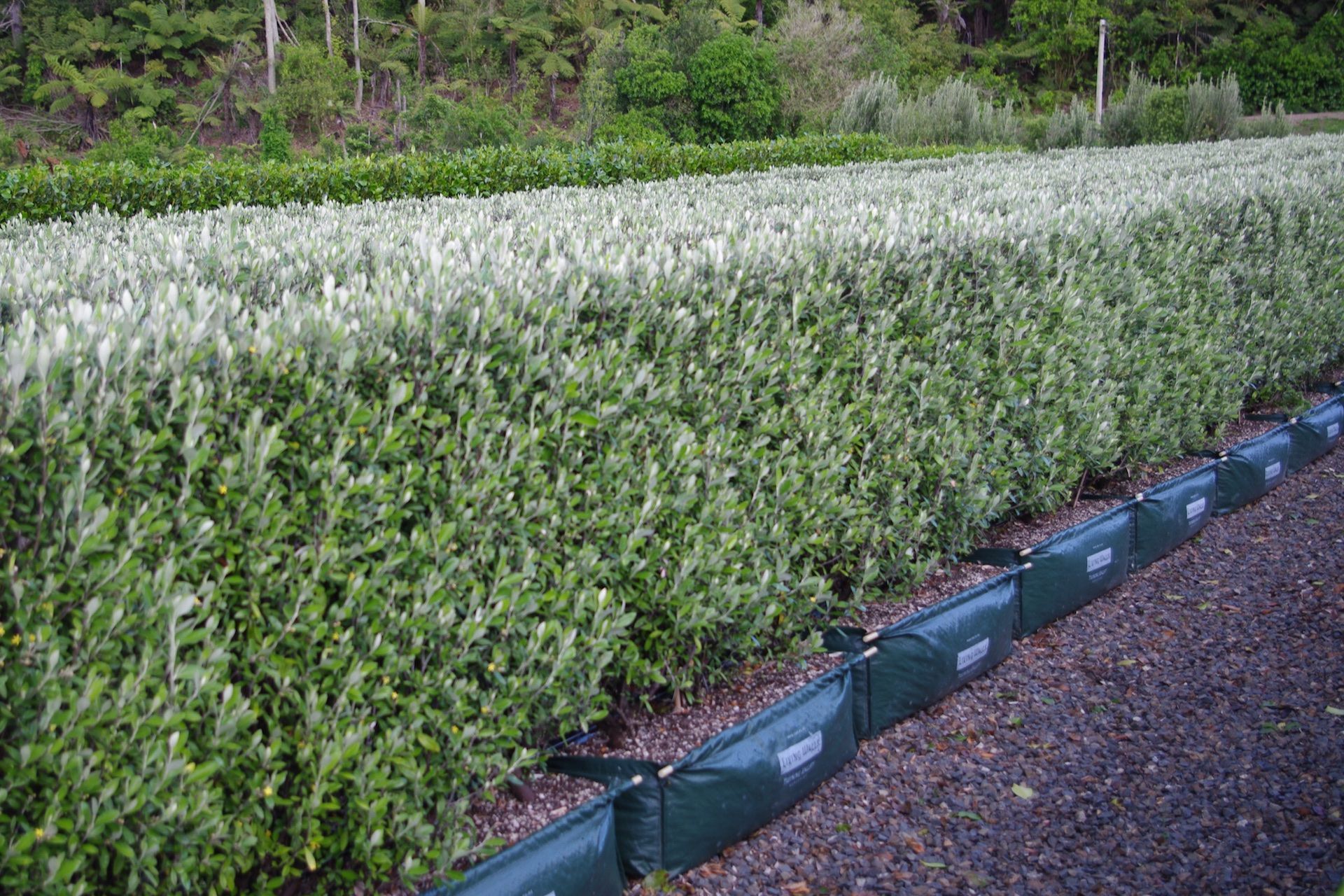
8. Japanese Maple (Acer Palmatum)
The Japanese Maple (Acer Palmatum) stands out as an option due to its compact size, with varieties that grow between 2 to 6 metres tall. The tree's hallmark is its stunning seasonal colour transition — from lush greens in summer to vibrant yellows, oranges, and reds in autumn. Its delicate, finely cut leaves also add a unique texture and elegance to any garden setting. Dwarf varieties further cater to those with very small spaces, ensuring that the beauty of Japanese Maples can be enjoyed in almost any setting.
Adaptability and ease of care are key benefits of the Japanese Maple in our country's temperate climate. These trees thrive in well-draining, slightly acidic soil and prefer sheltered spots to protect their foliage from strong winds and direct, hot sunlight. Their role in garden design is versatile; they can serve as striking specimen trees, add vertical interest to layered plantings, or enhance a Japanese-themed garden design. With a slow growth rate and the ability to be pruned into desired shapes and sizes, Japanese Maples are not just a plant, but a living sculpture that brings year-round beauty and a sense of tranquillity to small garden spaces.
Recommended varieties of Japanese Maple
Acer palmatum 'Dissectum' (Cutleaf Japanese Maple) is a variety that grows more horizontally than vertically, making them ideal for small gardens. They typically reach a height and spread of 1.5 to 2.5 metres over 10 to 20 years.
Acer palmatum 'Atropurpureum' (Purple Japanese Maple) grows to a modest height of approximately 4 to 6 metres. Its upright growth habit and vibrant autumn colours, which include bright reds and deep burgundies, make it a focal point in any landscape.
9. Kōwhai
Kōwhai, with its botanical name Sophora microphylla, is a quintessential New Zealand native that makes an outstanding choice for small gardens due to its stunning visual appeal and adaptability. One of the most compelling features of kōwhai is its vibrant yellow flowers, which bloom profusely in spring and provide a spectacular display against its dark green foliage. These flowers are not only a feast for the eyes but also attract a wealth of birdlife, including the native Tui and Bellbird, adding a dynamic layer of interaction and beauty to the garden.
Kōwhai trees are relatively slow-growing, which allows them to fit well within smaller spaces without the risk of quick overgrowth. Furthermore, there are several compact and dwarf varieties available that are specifically suited for limited areas, enabling gardeners with even the smallest of spaces to enjoy their majestic beauty.
Recommended species of Kōwhai
Sophora tetraptera (large-leaved kōwhai) can grow to a height of 6 to 8 metres but with proper pruning and maintenance, it can be kept at a manageable size.
Sophora microphylla (small-leaved kōwhai) can reach up to 10 metres in height in the wild, but like other kōwhai, it can be pruned to fit smaller garden settings.
Browse the most popular native trees in New Zealand on ArchiPro
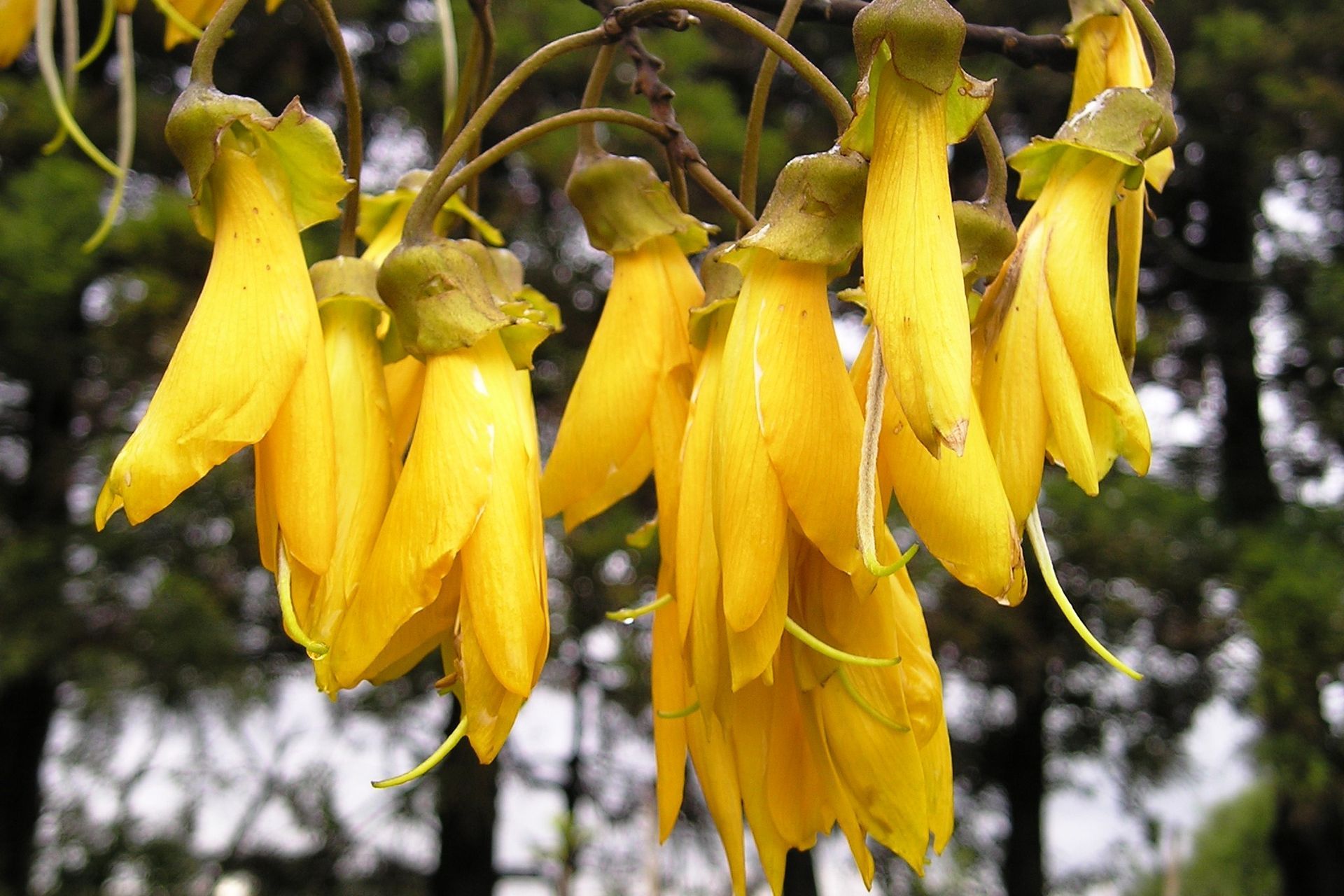
10. Magnolia grandiflora (Southern Magnolia)
Magnolia grandiflora is a splendid choice due to its evergreen nature, offering year-round beauty and privacy. Despite its potential to grow large, several dwarf cultivars such as 'Little Gem', 'Teddy Bear', and 'Kay Parris' are perfectly suited to smaller spaces. These cultivars retain the species' distinctive large, glossy, dark green leaves with velvety brown undersides and produce iconic, large, creamy-white, and intensely fragrant flowers from a young age.
The adaptability of Magnolia grandiflora to a range of soil types and conditions in New Zealand, coupled with its relatively low maintenance requirements, makes it a practical option for gardeners. These trees are tolerant of both sun and partial shade, though they prefer a sunny spot with well-drained, fertile soil to thrive and produce the best flowers. Their resistance to pests and diseases further adds to their appeal for small garden settings, where robust, low-care plants are valued.
Recommended varieties of Magnolia grandiflora
Magnolia grandiflora 'Little Gem' reaches about 4 to 6 metres in height and 2 to 3 metres in width, smaller than most other varieties of this species.
Magnolia grandiflora 'Teddy Bear' grows to a similar size offering a year-round aesthetic without overwhelming smaller garden areas.
Magnolia grandiflora 'Kay Parris' is a stronger, hardier variety than ‘Little Gem’ and is very popular for small gardens growing to around 5 x 3 metres.
Related article: 10 fantastic fast growing evergreen trees for gardens in New Zealand
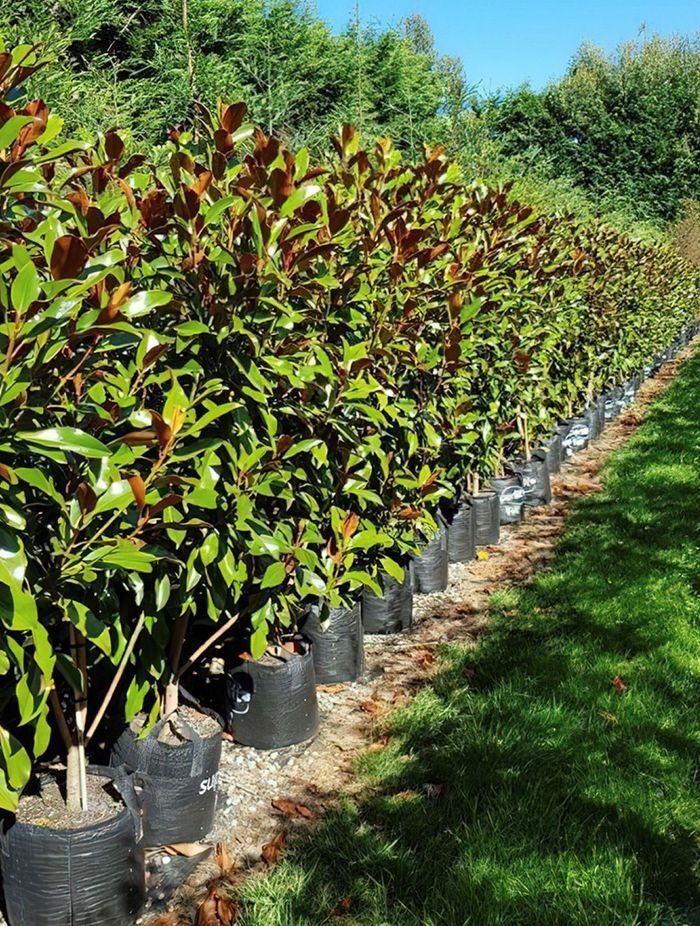
11. Rātā
Rātā trees, particularly the Southern Rātā (Metrosideros umbellata) and its relatives within the Metrosideros genus are excellent choices for small gardens in New Zealand due to their stunning floral displays and ecological benefits. These trees are known for their vibrant red flowers that bloom in summer, creating a spectacular visual attraction that is intrinsically "Kiwi". The compact growth habit of some Rātā species and their ability to be pruned makes them suitable for smaller spaces, allowing gardeners to enjoy the majesty of these native trees without requiring a large amount of land.
Rātā trees offer year-round interest with their evergreen foliage, which provides a lush backdrop to any garden composition. The leaves of the Southern Rātā, for example, are a dark, glossy green, contributing to the garden's structure even when the tree is not in bloom.
Recommended varieties of Rātā
Southern Rātā (Metrosideros umbellata) is the main choice for a small garden which can grow to 15 metres tall in its natural habitat but can be managed in a garden setting.
Some great trees for small gardens
Those with small gardens will hopefully be feeling a little better about finding some great trees and plants for their cosy outdoor spaces. Whether it is a boxwood hedge as a border or some citrus fruit trees that will also feed the family, you'll have plenty of great options to consider for your garden.
Find all the plants and trees you need for your garden on ArchiPro


